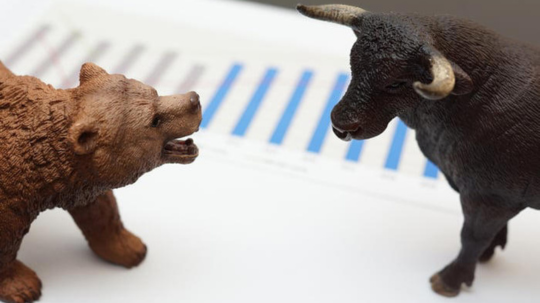Over the past couple of years, the inherent volatility of Wall Street has become evident. The timeless Dow Jones Industrial Average (DJINDICES: ^DJI), benchmark S&P 500 (SNPINDEX: ^GSPC), and innovation-driven Nasdaq Composite (NASDAQINDEX: ^IXIC) have successfully navigated two bear markets since the start of the decade. This journey also included a period of exuberant investment sentiment, propelling all three indexes to unprecedented record-closing highs in either late 2021 or early 2022.
The prevailing question on investors’ minds currently lacks mystery. Their primary curiosity centers on the future direction of the Dow Jones, S&P 500, and Nasdaq Composite following three and a half years of remarkable volatility. This seemingly simple query has revived the longstanding rivalry on Wall Street, pitting those who believe “this, too, won’t last” against investors who assert that “this, too, shall pass.”
“This, too, won’t last”
During the annual shareholder meeting of Berkshire Hathaway (NYSE: BRK.A)(NYSE: BRK.B) in early May, CEO and billionaire investor Warren Buffett stated that the exceptional phase for the U.S. economy was drawing to a close. While Buffett unwaveringly supports America—a point he has reiterated in previous Berkshire Hathaway shareholder meetings and investment communications—he possesses the acumen to acknowledge the growing near-term challenges faced by the U.S. economy.
Prudent skeptics of investing are carefully assessing these escalating headwinds and concluding that Wall Street’s 2022 bear market might not have fully receded. Essentially, there is a perception that the substantial rally in the S&P 500 and Nasdaq Composite since the beginning of 2023 may not be sustainable.
A prime example is the Shiller price-to-earnings (P/E) ratio of the S&P 500, also known as the cyclically adjusted price-to-earnings ratio (CAPE ratio). This metric is based on the average inflation-adjusted earnings of the previous ten years. Incorporating a decade’s worth of corporate earnings history prevents short-term fluctuations from skewing this measurement.
When analyzed historically back to 1870, the Shiller P/E of the S&P 500 has averaged 17.05. However, for nearly the entire past three decades, it has consistently exceeded this average, largely due to the democratization of investing facilitated by the internet’s breakdown of entry barriers. Access to information at the click of a button, coupled with an extended period of historically low interest rates, has fueled heightened risk-taking among regular investors.
As of the closing bell on August 24, 2023, the Shiller P/E stood at 30.18. Throughout 153 years, only six instances have seen the Shiller P/E surpass the 30 mark. In all five previous cases, the Dow Jones Industrial Average or S&P 500 experienced declines of at least 20% in their value. Extended overvaluations are simply unsustainable over extended periods.
Similarly, the broad market rally in 2023 has been driven by enthusiasm surrounding Wall Street’s next major investment area: artificial intelligence (AI). A report by PwC earlier this year projected that AI could contribute a significant $15.7 trillion to the global economy by 2030.
The demand for AI solutions is particularly evident for Nvidia (NASDAQ: NVDA), the dominant player in AI-driven graphics processing units (GPUs) used in high-compute data centers. Nvidia achieved a remarkable 141% growth in data-center revenue in the previous quarter, with its data center segment contributing $10.3 billion of the total $13.5 billion in revenue for the July quarter.
Nevertheless, historical precedent reminds us that these pioneering investments often disappoint investors. While it’s challenging to find fault with Nvidia following two consecutive stellar quarters, the exact nature of an AI-driven world remains uncertain. History teaches us that all early-stage investments require time to mature, and periods of early exuberance often coincide with speculative bubbles. In essence, the prevailing sentiment is that this phase too shall eventually wane.
